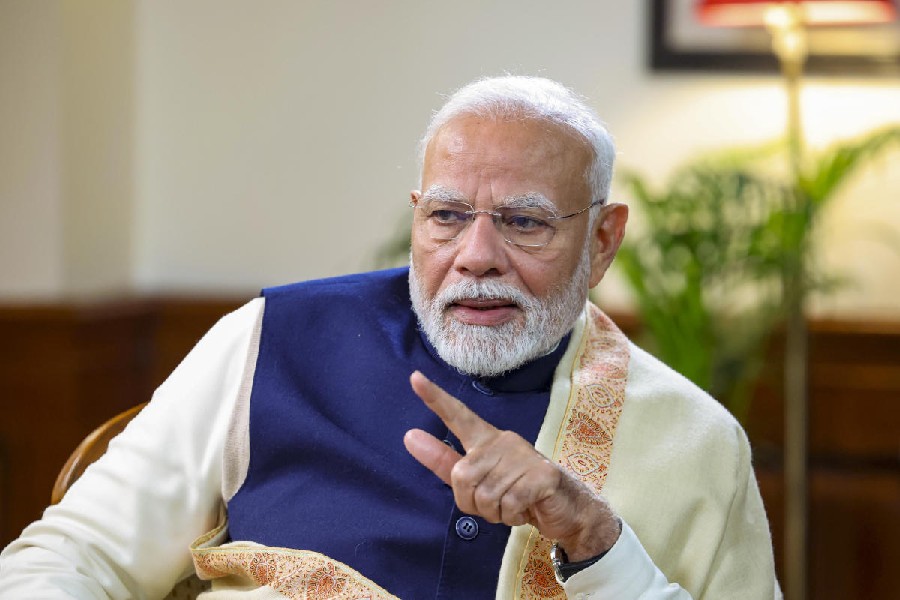Calcuttans who are 80 years or older have the option to cast their vote at home with polling officials coming over for the exercise.
Thousands of voters have availed themselves of the service during the fourth phase, while many more have applied for the same in the remaining four phases.
Here is how the process of voting from home, introduced this year in Bengal, works.
Eligibility
Anyone who is 80 or above and has his or her name on the electoral list is eligible to vote from home. Booth-level polling officers have to provide such persons with “Form 12D”, where they have to state that they want to vote from home.The officers have to take back the filled-in form within five days of the notification of election in that constituency.
Registration
Polling officials called on people ages 80 or more, asking whether they were willing to cast their vote from home to avoid standing in queues and exposure to unknown people during the pandemic.
Krishna Sarkar, 80, a resident of BD Block in Salt Lake, was “pleasantly surprised” when polling officials came knocking on her door last week asking whether she was willing to vote from home. “My mother was elated,” said son Sujoy.
The officials left a copy of Form 12D and returned two days later to collect the filled-in form. On Sunday, five polling officials reached their home to get Sarkar’s vote. Salt Lake votes on April 17 but Sarkar was allowed to vote in advance.
“In some housing societies, we faced problems as many people did not know about this and thought we were from a political party trying to influence them. Some shut their doors on us,” said a polling official in Sonarpur.
Voting procedure
Officials carry ballot papers, envelopes, gum, wax, empty forms, hand sanitiser and a cardboard partition that is folded into an enclosure with one side open. First, the voter is asked to fill in Form 12D (if it was not filled in and submitted before) and then the rules are explained to him or her.
“It usually takes seven to 10 minutes to explain the rules of signing on the ballot paper that has the name and symbols of all contesting candidates. After putting a tick against the chosen candidate, the voter is supposed to fold the paper in four halves before handing it over to the polling officials,” said an official.
The folded ballot is put into an envelope and sealed. The sealed envelope is kept in another envelope and sealed. The process is repeated with a third envelope.
The procedure is videographed in the presence of the voter.
“We have got a good response. Twenty-one teams worked to ensure that the 691 elderly voters who had shown interest to vote from home could do so. The process was completed in three days by March 31,” said Sachchidananda Bandyopadhyay, the returning officer of the Kasba Assembly constituency, which went to the polls on April 10.
Secret ballot
The sealed envelopes are taken to a strongroom. They will be opened on May 2.
“So much secrecy was maintained that I was asked to look the other way when I was helping my grandmother fold the ballot paper. No one was allowed to even peep when she was casting her vote behind the cardboard partition,” said the granddaughter of Sumitra Dey, 81, who is a voter in the Sonarpur South constituency, which voted on April 10.
Enrolment
Parts of Calcutta and surrounding areas will vote on April 17, 22, 26 and 29. However, the enrolment process of elderly voters who want to vote from home has stopped for this year.
“The Election Commission of India rules say that the enrolment process has to be wrapped up within five days of the date of notification of the elections in that phase,” said district election officer, north, Piyali Sengupta, who is in charge of seven Assembly constituencies that will vote on April 29.











